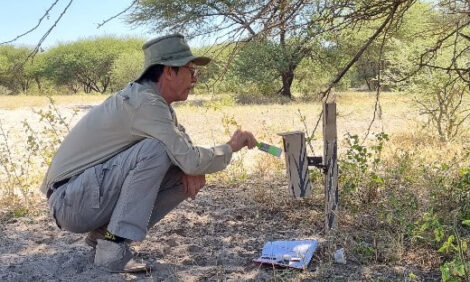



Got Butyric? Why the Stinky Stuff Should Be Avoided
Butyric acid causes silage to smell, lowering feed intake and resulting in a wide range of metabolic issues, with transition cows particularly at risk.These animals should not be exposed to more than 50 grams of butyric acid per day, advises Dr Heather Tucker, researcher at the William H Miner Institute, a research education and demonstration farm in northern New York State.
She writes that maintaining maximum forage quality is a primary goal of any farm when ensiling and feeding forage. Fermentation allows for the nutrient content of the forage to be preserved to optimize cow performance and minimize dry matter loss.
When fermentation occurs in an anaerobic environment, microbes feed on the sugar and other soluble carbohydrates that are present in the forage, writes Dr Tucker.
The fermentation of carbohydrates produces organic acids, lowering the pH, and results in silage. However, sometimes the ensiling process goes wonky and the resulting ensiled forage isn’t what we want it to be.

Butyric acid in silage signifies clostridia contamination during the ensiling process. Most likely these bacteria hopped onto the forage from either soil or manure sources entering the bunker or silo with the forage. Clostridia can only produce butyric acid when the pH of the forage is greater than 5.0 and there is sufficient moisture.
When pH is below 5.0, lactic acid bacteria inhibit clostridia’s ability to produce butyric acid. Maintaining dry matter at 35 to 45 per cent and wilting grass prior to ensiling ensures that the water soluble carbohydrate concentration of the grass is sufficient to prevent increases in the clostridia population.
If a moisture tester is unavailable to do a quick dry matter check prior to ensiling grass, a rough estimate of the dry matter can be determined through balling the grass in your hand and giving it a squeeze. If the grass is in the ballpark of the proper dry matter no fluid will leak out of your hand from the grass, but the grass will leave your hand feeling slightly damp. Maintaining optimal ensiling conditions will produce high quality ensiled forage.
Butyric acid can take its toll on cows just as much as it alters the forage quality. Due to the unpleasant smell associated with silage high in butyric acid, cows will typically reduce their dry matter intake. Reduced dry matter intake coupled with lower digestible energy from high butyric acid silage puts transition cows at a greater risk for developing metabolic issues while reducing lactational and reproductive performance.
A cow cannot determine if the butyric acid circulating in her blood stream comes from ruminal fermentation, body fat mobilization, or from silage. Cows convert excess butyric acid regardless of origin, to ketones increasing the overall concentration of ketones in the blood increasing the risk for ketosis and other metabolic issues. To circumvent the negative health and performance impacts, intake of butyric acid by transition cows should be limited to less than 50 g/d, while cows in early lactation should consume less than 150 g/d to minimize reductions in intake and performance. Cows that are farther along in lactation can tolerate up to 200 g/d of butyric acid.
Even with the best-laid plans and management, butyric acid may still develop in silage resulting in the need for quick action. The first step is to confirm the presence of butyric acid through visual and odor assessment. Follow up with lab analysis to determine how much butyric acid is present in the silage, then calculate the daily intake of butyric acid.
Determine if alternate feeding plans need to be made for at-risk groups if the daily intake of butyric acid exceeds guidelines. Due to the sensitivity of transition cows, don’t feed these cows forages that contain greater than 50 g/d butyric acid, while the remainder of the herd should be fed a ration that dilutes the butyric acid containing silage. If dilution is not practical for a farm, silage can be knocked down from the bunk face and spread out in an open area to air out for several days reducing the overall butyric acid content while maintaining the stability of the forage. Finally, if the butyric content of the forage is greater than 2 per cent it is recommended to dispose of the silage.


